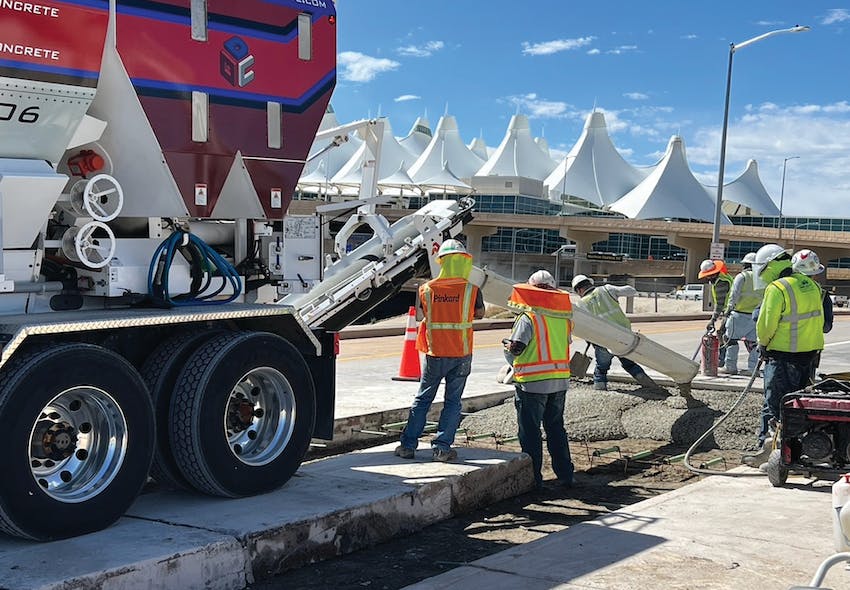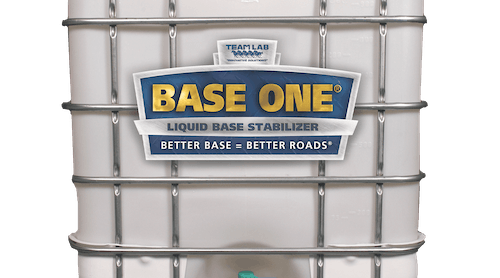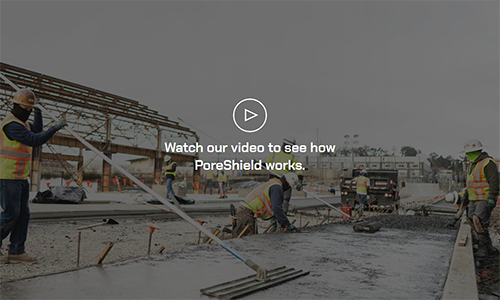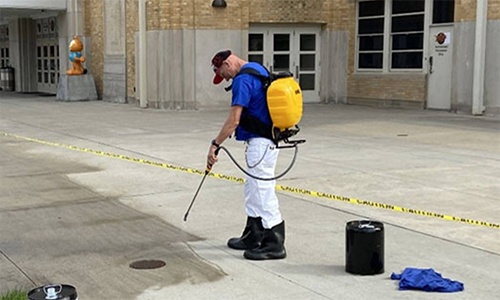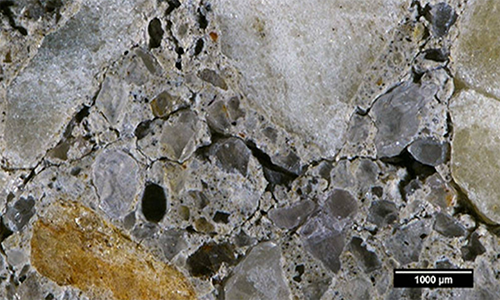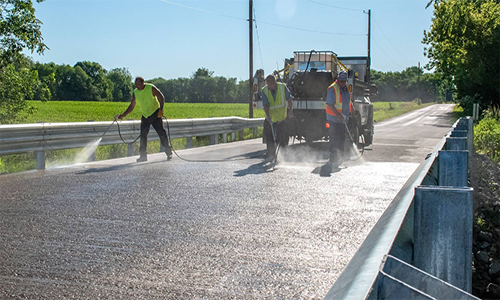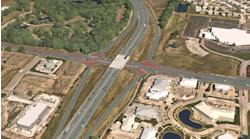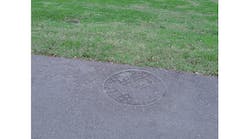Every year, the U.S. produces roughly 85 million metric tons of cement. Last year, production reached 92 million metric tons, the highest level since at least 2010. Given its ubiquity, it’s ironic the material has remained relatively unchanged for millennia. The Romans mixed lime, clay, and volcanic ash. In the 1800s, English bricklayer Joseph Aspdin burned limestone, clay, and shale, and called the resulting product portland cement after the white stone on the Isle of Portland. The main mineral in today’s portland cement is tricalcium silicate (C3S), the substance that gives concrete its early strength but also its high carbon footprint: 900 kg carbon dioxide equivalents (CO2-eq) per ton of cement.
Until fairly recently, the basic composition of portland cement remained essentially unchanged. In the 1950s, UC Berkeley Professor Alexander Klein studied the mineral ye’elimite, which is used to make calcium sulfoaluminate (CSA) cement, to see if it could be used to reduce the shrinkage that causes portland cement concrete to deteriorate from cracking. He was correct. Adding water to CSA creates ettringite, a needle-like crystal that gives slightly expansive properties to the cement paste. While CSA-containing cement can be blended with portland cement to make rapid-setting concrete, the portland cement portion of the mix increases its carbon footprint in addition to compromising sulfate resistance and shrinkage. There’s also no classification system like ASTM C150 (Standard Specification for Portland Cement) for CSA-portland cement blends.
In the 1970s, CSA was used to develop a cement that exhibited rapid strength, low shrinkage, and that doesn’t contain portland cement. This was the birth of belitic calcium sulfoaluminate (BCSA) cement: a single-component cement that doesn’t require blending with portland cement or mixing with accelerating additives. BCSA uses water quickly and efficiently, which minimizes shrinkage to 200 microstrains at 28 days per ASTM C157 (Standard Test Method for Length Change of Hardened Cement Mortar and Concrete) compared to 600 to 700 microstrains for portland cement.
Produced, placed, and cured similarly to portland cement, BCSA cement concrete can reach a compressive strength of 4,500 psi in less than two hours. Obviously, this is a great benefit for DOTs seeking to minimize inconvenience to the driving public by reopening roads in hours instead of days, and for contractors eager to increase profits by quickly moving on to the next job.
All cements contain limestone. However, because BCSA needs much less than portland cement and is burned at lower temperatures in the cement kiln, it’s more environmentally friendly. Manufacturing BCSA produces 750 kg CO2-eq per ton of cement, according to the material’s environmental product declaration (EPD), compared to portland cement’s 900 kg CO2-eq per ton.
Also, because a BCSA rapid-setting concrete mix requires less cement than portland-based rapid-setting concrete, its carbon intensity – carbon emissions per unit performance in psi – is appreciably lower than for portland cement mixes.
On the Jobsite
Belite (dicalcium silicate/C2S) is the main ingredient in BCSA, and it provides long-term strength in the concrete. CSA, which provides early strength, is the second-largest ingredient.
Rapid-strength concrete mixes made with portland cement and accelerators require high cement content. However, BCSA concrete can achieve high early strength with conventional 6.5-to-7-sack mixes. It’s manufactured in portland cement plants and thus readily available nationwide.
BCSA concrete’s performance has been assessed during recent years:
· The California Department of Transportation (Caltrans) has a pavement opening specification of 400 psi flexural strength. The department has placed more than 2,000 lane miles on high-traffic freeways and bridges since the 1990s as part of its maintenance program. A 2020 study by University of Illinois Civil and Environmental Engineering Emeritus Professor Mike Darter found that individual slabs can last 13 years on outer lanes with high truck volume and 15 to 20 years on inner lanes with lower truck volume.
· A CTL Group study found that BCSA pavement at Seattle-Tacoma (Sea-Tac) International Airport increased from 4,600 psi compressive strength at opening to 9,600 psi after 25 years; flexural strength increased from 715 psi at opening to 860 psi after 25 years. No alkali-silica reaction (ASR) and only 5/16-inch (8 mm) of carbonation was observed.
This enhanced performance is reflected in a higher price for the cement, but when the cost savings in time saved, longer lifetime, better durability, and reduced carbon emissions is taken into account, considerable overall savings is realized.
State departments of transportation have consumed more than 2 million tons for bridge and highway panel replacement, partial- and full-depth pavement rehabilitation, and emergency repairs. The material is most often used in densely populated states where extended closure times aren’t possible. For these agencies, the upfront cost is offset by the cost of seven-day closures.
How to Specify
Because it isn’t portland cement, BCSA can’t be specified as an ASTM C150 cement. Instead, it should be specified per ASTM C1600 (Standard Specification for Rapid Hardening Hydraulic Cement) as Type 2, very-rapid-hardening (VRH) for use where very high early strength is desired.
Colorado, Massachusetts, New York, Ohio, Virginia, and Washington have developed specifications for fast-track construction that are usually descriptive (e.g., opening flexural strength, drying shrinkage limit) but sometimes prescriptive (e.g., cement composition, manufacturer). Most specifications are based on ASTM C1600.
An optimal rapid-setting concrete specification emphasizes early strength and low shrinkage measured from opening time, which is usually less than four hours instead of seven days.
For example, 2,000 cubic yards of BCSA were recently used to rehabilitate access roads and parking spaces at Denver International Airport. Because the roads are airside, the Colorado Department of Transportation (CDOT) wrote a special provision for rapid-setting “Class P” concrete (PRS). The specification called for ASTM C1600 cement and included the agency’s own concrete performance requirements for alkali-silica reaction (ASR), shrinkage, freeze-thaw, permeability, flexural strength, and aggregate gradation.
Differentiating between types of CSA-containing cements can be confusing, so a nomenclature was proposed by the author (see sidebar with graphic) and has been approved by ACI Committee 242 on Alternative Cements. It’s awaiting approval by ACI’s Technical Activities Committee and could be released in early 2023. R&B
About the Author: Eric Bescher is a professor in UCLA’s Samueli Department of Material Science and Engineering and a voting member of ACI Committee 242 on Alternative Cements.
